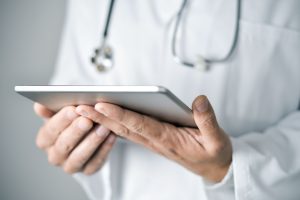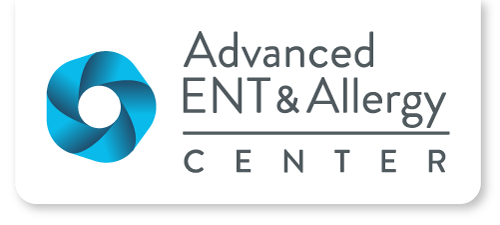How COVID-19 Will Change Routine Medical Care Going Forward – The Silver Lining

The past 60 years have been a relatively quiet one in the U.S. when it comes to infectious disease. With the advent of vaccines in the 1950’s and 1960’s we conquered many diseases including polio, smallpox, chickenpox, mumps, measles and whooping cough. Diseases that were feared prior to this time essentially disappeared, causing generations of kids to grow up, have their own kids, and then become grandparents without having to worry about the dangers of infectious diseases. From the 1960’s until 2020 medical care developed a similar cavalier attitude. Hospitals, despite being the place where the sickest people tend to be, became the place where everything was done. Most doctor’s offices were attached to the hospitals. Labs and imaging centers were located in the same buildings. Because of this, most routine medical care in the US is done in crowded medical complexes. Healthy people sit in typically crowded waiting rooms right next to the sick, lab tests for routine procedures are performed in the same chair just occupied by someone quite ill. Routine surgeries are often done in hospitals when they could have been done elsewhere. And following these surgeries, otherwise healthy people recover in beds right next to people who are sick. This cavalier attitude, created by 60 years of relative quiet, has put all of us at increased risk. Coronavirus has changed all that. This new epidemic has reminded us of what we were acutely aware 60 years ago, that when it comes to infectious diseases, we need to be careful. We need to re-think how we approach routine medical care.
Keeping Healthy People Healthy
 Being an ear, nose and throat physician that specializes in nose, sinus, and allergy care, there are some relatively easy solutions that are already available which would put us all at less risk while still delivering exceptional quality of care to all of our patients. Essentially, the overall goal is to do what we can to keep healthy people away from those that are sick. First, since most of the sick people are in hospitals, we need to do what we can to keep healthy people out of the hospital. Second, the more people there are in a shared space, the more likely it is that healthy people will come into contact with sick people. When it comes to routine health care, smaller is better. Third, the fewer places a patient has to go to get what they need for their health care, the safer we all will be. Any procedure that can be done safely in a surgery center, or better yet, in a doctor’s office instead of a hospital, decreases risk. Any tests that can be done in the office at the same time as their doctors visit, instead of having to go to a lab or an imaging center decreases risk. Any visit or treatment done at home, instead of in the doctor’s office, decreases risk. When it comes to nose, sinus, and allergy care there are 4 immediate ways we can do this.
Being an ear, nose and throat physician that specializes in nose, sinus, and allergy care, there are some relatively easy solutions that are already available which would put us all at less risk while still delivering exceptional quality of care to all of our patients. Essentially, the overall goal is to do what we can to keep healthy people away from those that are sick. First, since most of the sick people are in hospitals, we need to do what we can to keep healthy people out of the hospital. Second, the more people there are in a shared space, the more likely it is that healthy people will come into contact with sick people. When it comes to routine health care, smaller is better. Third, the fewer places a patient has to go to get what they need for their health care, the safer we all will be. Any procedure that can be done safely in a surgery center, or better yet, in a doctor’s office instead of a hospital, decreases risk. Any tests that can be done in the office at the same time as their doctors visit, instead of having to go to a lab or an imaging center decreases risk. Any visit or treatment done at home, instead of in the doctor’s office, decreases risk. When it comes to nose, sinus, and allergy care there are 4 immediate ways we can do this.
1. Telemedicine – While a good physical exam is still necessary for many issues, there are many evaluations that could be done from the comfort of a patient’s home or office. Many follow-up visits could immediately be done this way. For new patients, an initial telemedicine visit could be used to make sure that the actual in-person visit to the office is as effective and efficient as possible, leading to a quicker resolution to their problem. This would not only move some patient visits from our office to their home (remember, smaller is better), but by decreasing the number of patients coming into the office we are also limiting the number of people sitting in our waiting rooms, also decreasing risk. Doctors visits become more efficient and informative, and our community is healthier, a win for all.
2. Combining Services in a Single Office Visit – The more that can be done in one place at the same time, the better. Many of the patients that we see for nose, sinus, and allergy issues have multiple issues causing their symptoms. Many have anatomic issues (a crooked septum, for instance) along with chronic sinusitis and allergies that all together are causing their symptoms to be so difficult. Often, a sinus CT scan and allergy testing are needed to make an accurate diagnosis. Being able to do a complete history and physical exam, allergy testing, and a sinus CT scan in the office at the same time as the office visit allows us to create an effective and efficient treatment plan with the least amount of risk. Many offices, ours included, have an in-office low dose CT scanner and allergy testing on-site. Most, however, are not currently set up to be able to do all of these at the same time as the visit if needed. We have already figured out a way to do this and have been offering this to all of our patients for the past year with good success. It does require some difficult operational changes within the office, but we have been able to do it relatively easily, allowing us to achieve quality of life improvements for our patients quickly and more efficiently.
3. Moving Routine Surgery Out of the Hospital – Anything we can do safely and effectively outside of the hospital is a win for our community when it comes to exposure to infectious diseases. During the past 60 years, as worry about infectious disease has waned, more and more routine medical care has been done at the hospital. Routine surgeries, many of which could, and had, been performed safely outside of the hospital were moved to the hospitals, as hospital systems contracted with insurance companies and medical device companies. Hospitals also lobbied Congress for regulations that incentivized moving these surgeries to the hospital where both would, and did, make more money. Procedures that could be done in a surgery center, or better yet, in an office, were being done in hospitals, where healthy patients were having surgeries and recovering in the next room or the same room (pre-op and post-op recovery areas) as those who were ill. This has to change. Not only are procedures done outside of a hospital less expensive (hospitals are paid significantly more than a surgery center or a doctor’s office for the exact same procedure) but expose the patient to unnecessary infectious risks. Not only do all routine nose and sinus surgeries not need to be done in a hospital, and almost all of them can be done safely and effectively in the office without need for a surgery center as well. For the last 5 years we have been doing all of our nose and sinus surgery in the office, using a local anesthetic and a small amount of oral sedation (pills only-no IV) very comfortably, with a quicker and easier recovery, and with results that are better than what we were able to achieve in the operating room of a hospital or a surgery center. This is a new experience for most surgeons (operating on an awake patient), and does require developing a new skill that most of us have not been taught (doing the procedure at the patient’s speed not at the surgeon’s speed), but the procedure itself is the same one that we have been doing all along and the results are clearly better. And by doing this in the office, the exposure risk for our patients is the lowest possible.
4. Effectively Treating Allergies Without Weekly Office Visits – When it comes to treating allergies, the gold standard in the United States has always been allergy shots. These can effectively treat long term allergy symptoms but require a weekly visit to a doctor’s office, often in a very busy waiting room (filled with everyone else who is there to get their weekly allergy shot). After the shot has been administered you have to once again wait in the same very busy waiting room for another 30 minutes (it’s a safety issue- there is a small chance for a serious allergic reaction to the shot and even with this waiting period, 1-2 people die every year in the US due to an allergic reaction from the shot). In this model, week after week you are exposed to a waiting room full of other people, some of whom are healthy, but some of whom may be sick. In Europe however, allergy shots are not the gold standard for long term treatment of allergy symptoms. Instead, they primarily rely on allergy drops. Allergy drops work similarly to allergy shots, but instead are administered as daily drops placed under the tongue by the allergic patient at home. There have been no significant allergic reactions reported from drops (millions of doses), and most studies show similar long-term results. These studies also show that most people using daily allergy drops get both short-term improvement from their allergy symptoms as well as long term protection from their ongoing allergies. Again, these are done at home, require only yearly visits (most of which could be done telemedically), have no risk of a significant allergic reaction, and do not put healthy patients at increased risk by mingling with potentially sick patients every week for years. We have been using allergy drops for our patients for the past 15 years. It has been effective for both short-term relief of allergy symptoms as well as providing long-term protection from allergies years after the drops have been stopped, have been incredibly safe (no serious issues in thousands of patients), and have been much easier and more convenient for patients overall. Now that we have all become appropriately more aware of the importance of keeping healthy patients away from potentially sick patients, allergy drops make even more sense as a better alternative to allergy shots.
With Every Crisis Comes Opportunity
History has taught us that with every crisis comes opportunity. As a health care community, we could, and should have been doing these things already. We have become complacent about the increased risks associated with the way we have been practicing medicine in this country. As we are seeing with the pandemic of 2020, hospitals should be reserved for the things we really need hospitals for, and not for everything simply because there is money to be made, or because change is uncomfortable. Things that can be done in one place, especially if that place is less likely to expose healthy people to sick people (a doctor’s office as compared to a hospital) should be done at the same place and at the same time whenever possible. Surgeries should be done at the least exposed places possible, as long as they can be done safely and effectively at these places (office best, surgery center next best, hospitals last). Patients that can be seen telemedically at their home or work should be done this way as often as is appropriate, leaving doctor’s offices less crowded and more effective for the people who have to be seen in the office. And any treatments that can be done at home instead of in the office, with similar end results should be the new “gold standard”. Using these in combination will allow us to deliver effective, safe, comfortable, high quality medical care to everyone, without risking the health of us all.

